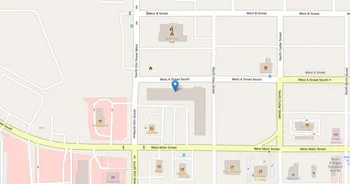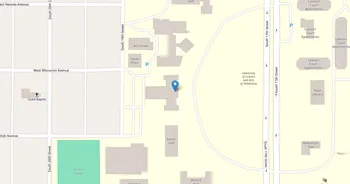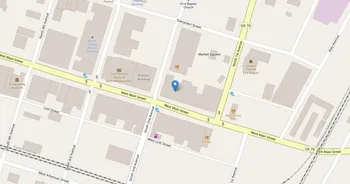Rose State College (RSC) : Overview, Courses, Scholarships & Rankings
About Rose State College
Set near a major Air Force hub in the Oklahoma City metro, Rose State College has a practical, can-do vibe. It's known for strong teaching in health fields, business, technology, public service, and the arts, with an emphasis on transfer-ready coursework and hands-on labs. Students find a welcoming library, an active student union, fitness spaces, a performing arts venue, and plenty of tutoring, advising, and support for military-affiliated families.
Campus life runs on community. Clubs, service projects and intramurals keep commuters connected. And there's space for quiet study or a quick pickup game. Career services bring in employers, coach interviews, and line up internship leads. The surrounding city offers easy commutes and quick access to downtown arts, sports and jobs. It's a friendly, get-it-done place.
Key Institutional Details
Contact & Profile
Academic & Institutional
Academic Programs & Fields of Study
Rose State College (RSC) offers 47 degree programs across 24 major academic fields, graduating approximately 914 students annually. The most popular fields by graduate volume are Health (8 programs, 148 graduates), Liberal Arts (1 programs, 146 graduates), Business (8 programs, 136 graduates), Security & Safety (2 programs, 135 graduates) and Social Sciences (4 programs, 90 graduates). Explore program details, award levels, and graduate demographics below.
Health (8 programs, 148 graduates)
Healthcare Professions, Medical Sciences and Clinical Practice
| Program Name | Graduates | Gender Distribution | Award Levels | CIP Code |
|---|---|---|---|---|
| Registered Nursing | 60 |
|
Associate's
|
51.3801 |
| Respiratory Care Therapy | 21 |
|
Associate's
|
51.0908 |
| Pre-Nursing Studies | 17 |
|
Associate's
|
51.1105 |
| Medical Radiologic Technology | 13 |
|
Associate's
|
51.0907 |
| Dental Hygiene | 12 |
|
Associate's
|
51.0602 |
| Clinical Laboratory Technician | 12 |
|
Associate's
|
51.1004 |
| Health Information Technology | 7 |
|
Certificate (1-2 yrs)
Associate's
|
51.0707 |
| Dental Assisting | 6 |
|
Associate's
|
51.0601 |
Liberal Arts (1 programs, 146 graduates)
Liberal Arts Education, General Studies and Humanities
| Program Name | Graduates | Gender Distribution | Award Levels | CIP Code |
|---|---|---|---|---|
| Liberal Arts and Sciences | 146 |
|
Associate's
|
24.0101 |
Business (8 programs, 136 graduates)
Business Administration, Marketing and Entrepreneurship
| Program Name | Graduates | Gender Distribution | Award Levels | CIP Code |
|---|---|---|---|---|
| Business Administration and Management | 61 |
|
Associate's
Other Award
|
52.0201 |
| Business Administration | 28 |
|
Associate's
|
52.0101 |
| Accounting and Bookkeeping Technology | 16 |
|
Other Award
|
52.0302 |
| Accounting and Business Management | 15 |
|
Associate's
Other Award
|
52.0305 |
| Small Business Management | 5 |
|
Other Award
|
52.0703 |
| Organizational Leadership | 4 |
|
Other Award
|
52.0213 |
| Marketing Management | 4 |
|
Other Award
|
52.1401 |
| Human Resources Management | 3 |
|
Other Award
|
52.1001 |
Security & Safety (2 programs, 135 graduates)
Emergency Management, Law Enforcement and Public Safety
| Program Name | Graduates | Gender Distribution | Award Levels | CIP Code |
|---|---|---|---|---|
| Cyber and Computer Forensics | 127 |
|
Certificate (1-2 yrs)
Associate's
Other Award
|
43.0403 |
| Criminal Justice and Safety Studies | 8 |
|
Associate's
|
43.0104 |
Social Sciences (4 programs, 90 graduates)
Sociology, Anthropology and Political Science Studies
| Program Name | Graduates | Gender Distribution | Award Levels | CIP Code |
|---|---|---|---|---|
| Social Sciences | 57 |
|
Associate's
|
45.9999 |
| Social Sciences | 15 |
|
Associate's
|
45.0101 |
| Sociology | 14 |
|
Associate's
|
45.1101 |
| Political Science and Government | 4 |
|
Associate's
|
45.1001 |
Human Sciences (1 programs, 51 graduates)
Family Studies, Consumer Sciences and Human Development
| Program Name | Graduates | Gender Distribution | Award Levels | CIP Code |
|---|---|---|---|---|
| Child Development | 51 |
|
Associate's
Other Award
|
19.0706 |
Computer & IT (1 programs, 31 graduates)
Computer Science, Information Technology and Cybersecurity
| Program Name | Graduates | Gender Distribution | Award Levels | CIP Code |
|---|---|---|---|---|
| Computer Programming | 31 |
|
Associate's
Other Award
|
11.0201 |
Kinesiology (2 programs, 30 graduates)
Exercise Science, Sports Medicine and Physical Recreation
| Program Name | Graduates | Gender Distribution | Award Levels | CIP Code |
|---|---|---|---|---|
| Sports, Kinesiology, and Physical Education | 15 |
|
Associate's
|
31.0501 |
| Exercise Science and Kinesiology | 15 |
|
Other Award
|
31.0505 |
Psychology (1 programs, 29 graduates)
Psychological Sciences, Mental Health and Behavioral Studies
| Program Name | Graduates | Gender Distribution | Award Levels | CIP Code |
|---|---|---|---|---|
| General Psychology | 29 |
|
Associate's
|
42.0101 |
Arts (2 programs, 17 graduates)
Fine Arts, Design Studies and Creative Performance
| Program Name | Graduates | Gender Distribution | Award Levels | CIP Code |
|---|---|---|---|---|
| Studio Arts, General | 11 |
|
Associate's
|
50.0702 |
| Intermedia and Multimedia | 6 |
|
Associate's
|
50.0706 |
Tuition, Fees & Estimated Costs
Overview of tuition rates, housing, and other annual education expenses for undergraduate and graduate students
Financial Aid & Student Support
Summary of scholarships, grants, student loans, and financial aid statistics for undergraduate students
Student Success Metrics
Graduation rates and post-graduation earnings to help assess student outcomes and long-term value of education.
Loan Burden & Repayment Outcomes
Breakdown of loan repayment rates and student debt levels by income and dependency status.
Frequently Asked Questions
Find answers to the most common questions about Rose State College (RSC)
How much does it cost to attend Rose State College (RSC)?
The annual tuition at Rose State College (RSC) is $5,032 for in-state students and $11,409 for out-of-state students. When including room and board, books, and other expenses, the total estimated cost is approximately $22,706 for in-state students and $29,083 for out-of-state students. Additional costs include room and board $8,924 and books and supplies $836.
Data based on IPEDS program completions for 2022-2023 academic year. Tuition and cost estimates are approximate and may not include all fees, personal expenses, or transportation costs.
What academic programs and degree levels does Rose State College offer?
Rose State College (RSC) offers 47 academic programs across 24 major fields of study, with available degree levels: Certificate (1-2 yrs), Associate's, Other Award.
Most popular program areas include:
- Healthcare Professions, Medical Sciences and Clinical Practice (8 programs)
- Liberal Arts Education, General Studies and Humanities (1 programs)
- Business Administration, Marketing and Entrepreneurship (8 programs)
- Emergency Management, Law Enforcement and Public Safety (2 programs)
- Sociology, Anthropology and Political Science Studies (4 programs)
Data based on IPEDS program completions for 2023-2024 academic year. Numbers reflect programs where students graduated, not all offered programs.
What financial aid and scholarships are available at Rose State College?
Rose State College (RSC) provides financial aid to 11% of first-time, full-time students, with average grants of $5,782 and average loans of $5,155.
Average financial aid amounts by type:
- Pell grants: $4,801
- State/Local grants: $3,286
- Institutional grants: $3,900
- Federal loans: $5,155
The university supports 736 students with grants and 117 students with loans annually.
Data based on IPEDS for 2022-2023 academic year. Financial aid amounts and percentages may vary by program, enrollment status, and individual circumstances.
What is the average salary for Rose State College graduates?
Rose State College (RSC) graduates earn a median salary of $33,124 after 6 years and $37,555 after 10 years.
The salary range 10 years after graduation spans from $19,165 (25th percentile) to $57,485 (75th percentile), with top earners reaching $66,100 (90th percentile).
Data based on IPEDS for 2022-2023 academic year. Salary data reflects graduates who received federal financial aid (approximately 60% of all graduates). Actual earnings may vary significantly based on program, location, and individual circumstances.
Related Universities




Found something useful? Help others discover it too! Share with friends, on social media, or save for later - every share helps someone find the information they need.